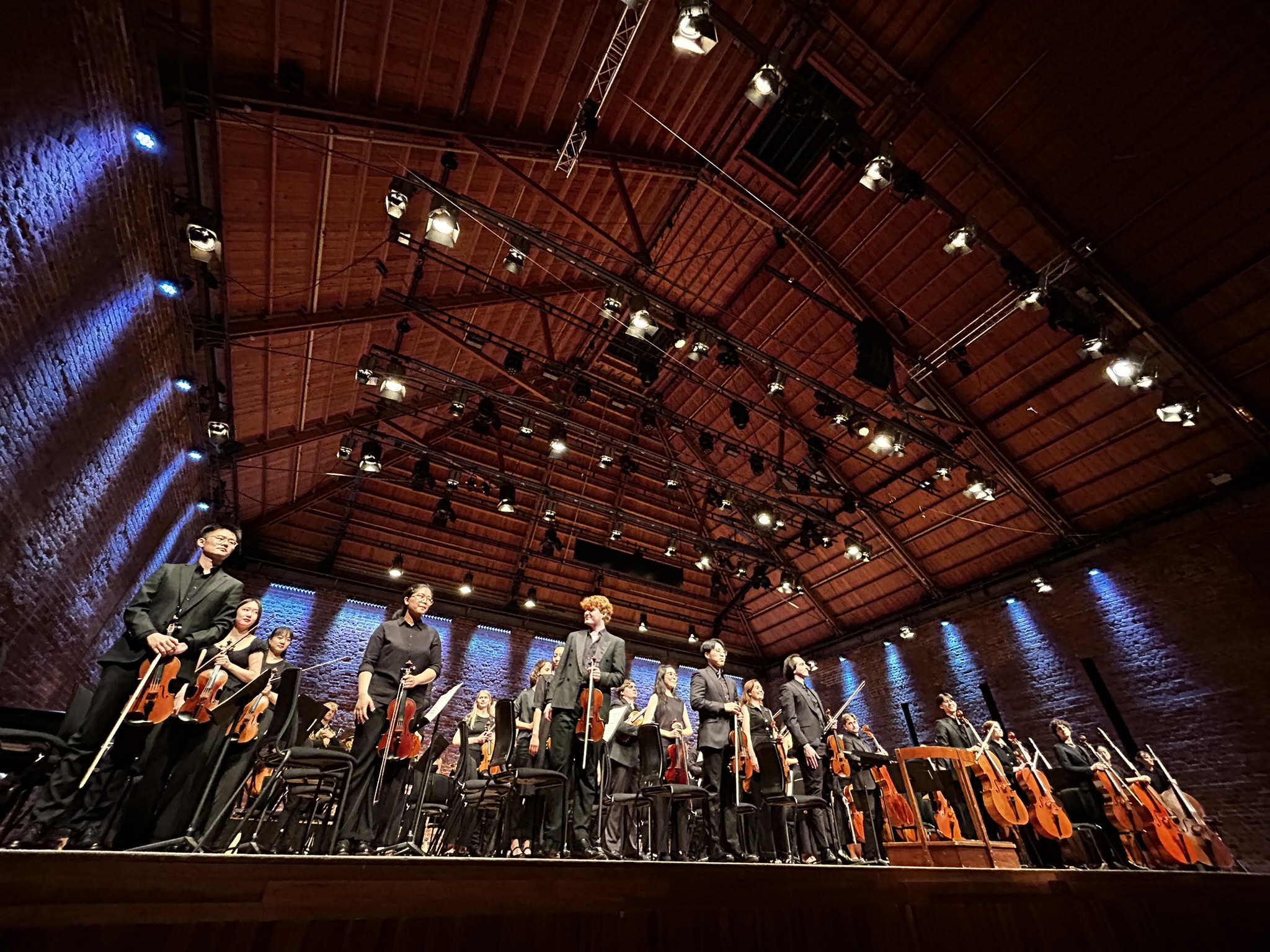Turnage, Nielsen, and Kidane: bold sounds, sharp messages, and orchestral firepower
Daniel Kidane’s sparkling concert opener ‘Sirens’ opened the Royal Academy Symphony Orchestra’s Aldeburgh appearance this year. This dazzling work is a homage to Manchester’s night life demands all manner of intricate craftwork from all sections of the orchestra. A colourful array of percussion instruments add glitters to the energy; percussive bass resonate on Snape’s wooden stage conjuring up a tantalising mix that isn’t simply loud, but also deep and music. The sound and the sheer scale of the orchestra (there’s barely enough room at the side for conductor Ed Gardner to stride onto stage) suggests a hulking great creature rousing the masses with an unmissable call to to do, think, and be something bold. An exhilarating listen in this ambient space.
Refugee by Mark-Anthony Turnage consists of five movements of varying length, four of which set verse by Emily Dickinson, Benjamin Zephaniah, Brian Bilston and W.H. Auden. Turnage’s score is atmospheric, descriptive, but always immediate in its musical language, perhaps deliberately playing more of supporting role and prioritising the text. Auden’s Refugee Blues gives voice to Jewish refugees escaping Nazi Germany at a time when many countries were closing their borders. Turnage chillingly sets this to a militaristic march which builds slowly in this highly contained movement, giving space to tenor Allan Clayton to deliver each with devastating impact. In the concluding Refugees by Brian Bilston the line ‘let us build a wall’ is preceded by a similarly slow burn underpinned with a long sustained pedal note. When the call is made, a barbed dissonant chord reinforces the unpalatable command. Later, the detracting voice is brought to an end with an unexpected and intriguing combination of harp, lower strings without vibrato, and pizzicato bass. This pivots to a more pastoral feel when the text voices the same text but to advocate. “They are not cut-throats with bombs up their sleeves,” feel more open, fresh, more resilient. In the instrumental Interlude, Turnage’s sound has an appealing self-confidence about it — lots of big sounds, fragmented melodies and rhythmic patterns, fleeting moments of the familiar, before abrupt finishes that jolt us out of comfort zone. Premiered 18 months after the 2016 Brexit referendum, Turnage’s work is disappointingly as prescient today as it was when it was first performed. Yet, it is the immediacy of it – both in the score and the text – that makes it valuable. Turnage’s music in the way that it gives space to text that is relevant and resonates, is so immediate in its language as to make it, surely, a valuable piece of programming not only as commentary on present day issues, but also demystifying contemporary music to an incurious audience.

In Nielsen’s fifth symphony a four movement symphony played with no breaks, demands a lot of everyone on stage in every bar on the page. Here the Royal Academy of Music Symphony Orchestra delivered in spades, give a tour de force performance. The ensemble’s dynamic range was consistent throughout, so too a commitment to drawing as much intensity as possible from the score. Gardner’s tidy enthusiasm helps no doubt, but there was an energy from the orchestra (surely representing the Academy’s entire instrumental intake in one academic year) that was the most impressive. Thirty minutes of Nielsen demands a lot of stamina. Cohesion in the ensemble occasionally slipped in the opening movement during a bass trombone solo, when pizzicato notes in the bass, celli, and timpani aren’t quite together, and similarly later between the brass and the timpani. Though this is all quickly forgotten come the final movement opening by a blistering string passage that shoots an electric charge down everyone’s spine. Rip-roaring knife-sharpening stuff. Little wonder there were so many smiles on stage during and after.



